D
Drorchid
Guest
Usually when Paph. lowii 'Horizontal' blooms, it blooms 6 months later compared to the regular lowii's. The seedling of Paph. lowii 'Horizontal' x self however was blooming together with a regular lowii, so this time I could compare the two flowers side by side, and even noticed a few more differences!
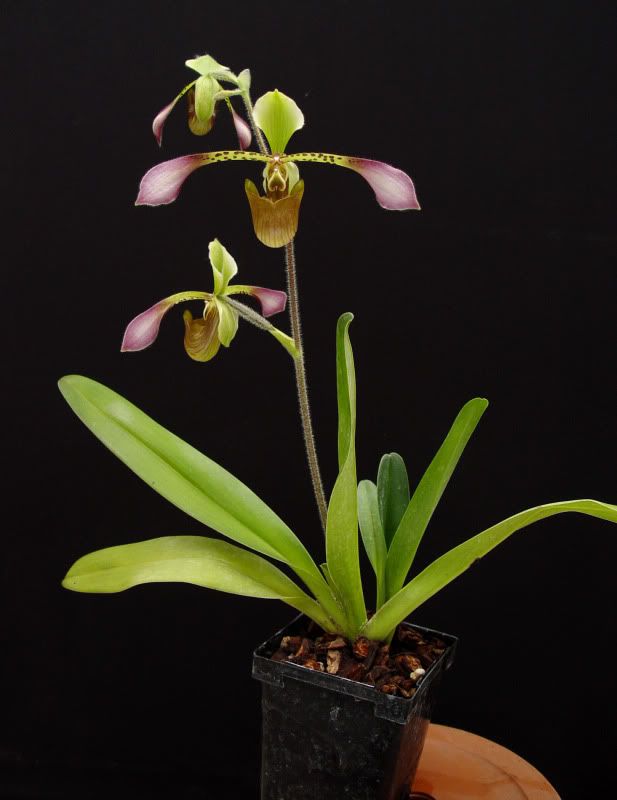
The obvious differences are:
-The "Horizontal" form has more horizontal standing petals, that don't make a 180 degree twist
- The Horizontal form has a more compact plant shape with leaves that stand up more.
- The dorsal is more green in color
Flower of Horizontal form:
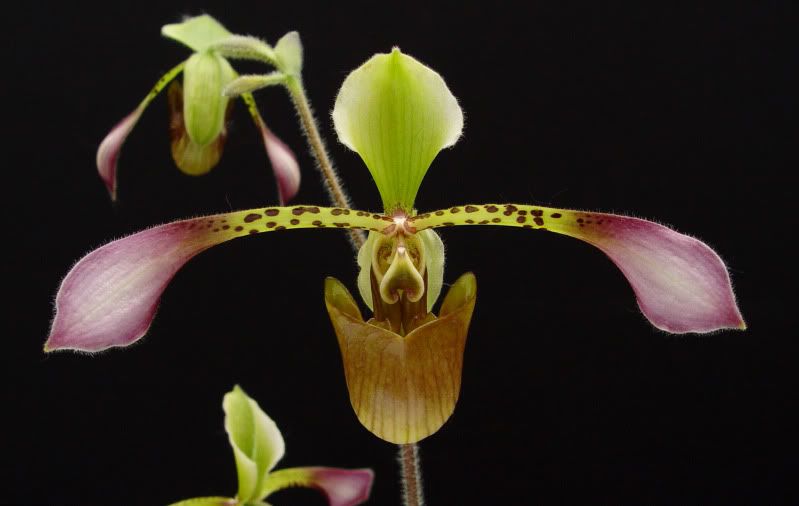
Flower of regular lowii:
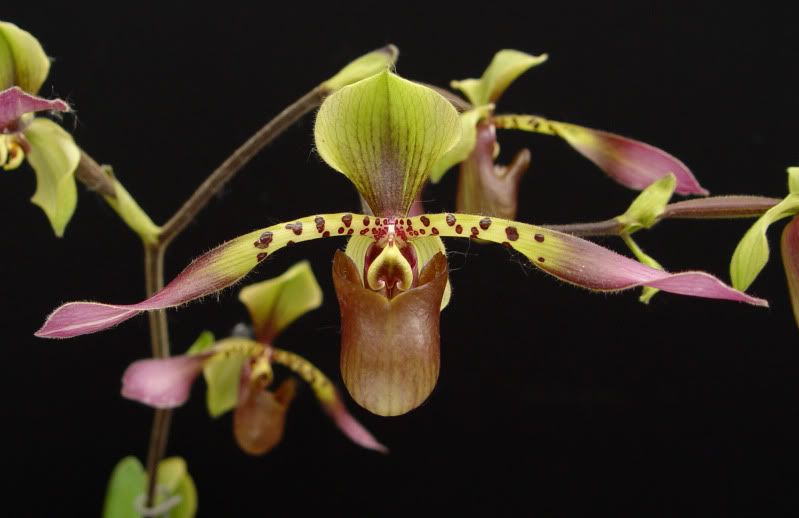
Looking more closely I noticed these other differences:
The staminodal shield of the regular lowii has a distinct point. On the Horizontal form it is not as distinct.
Staminode of Horizontal form:
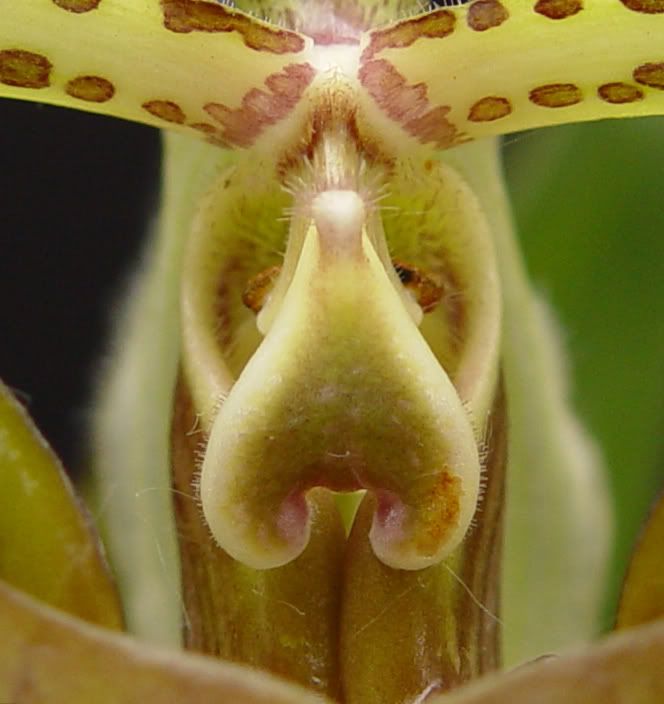
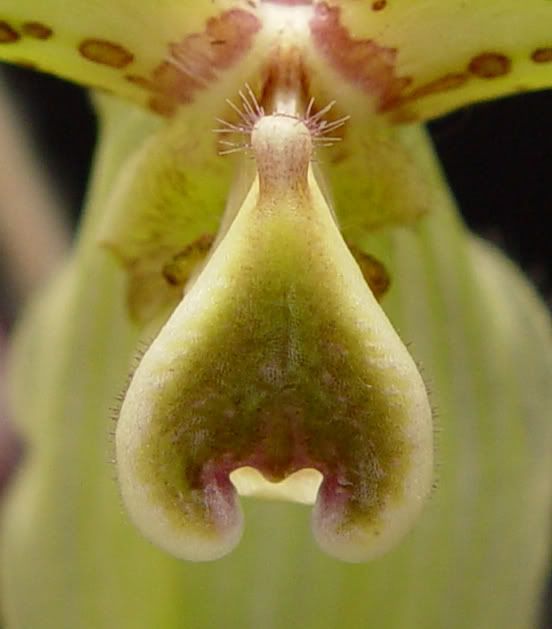
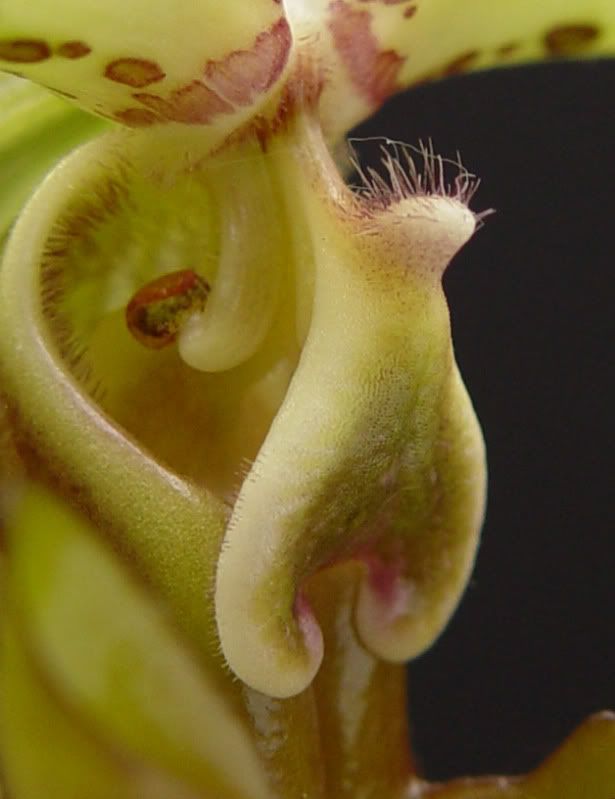
Staminode of regular lowii:
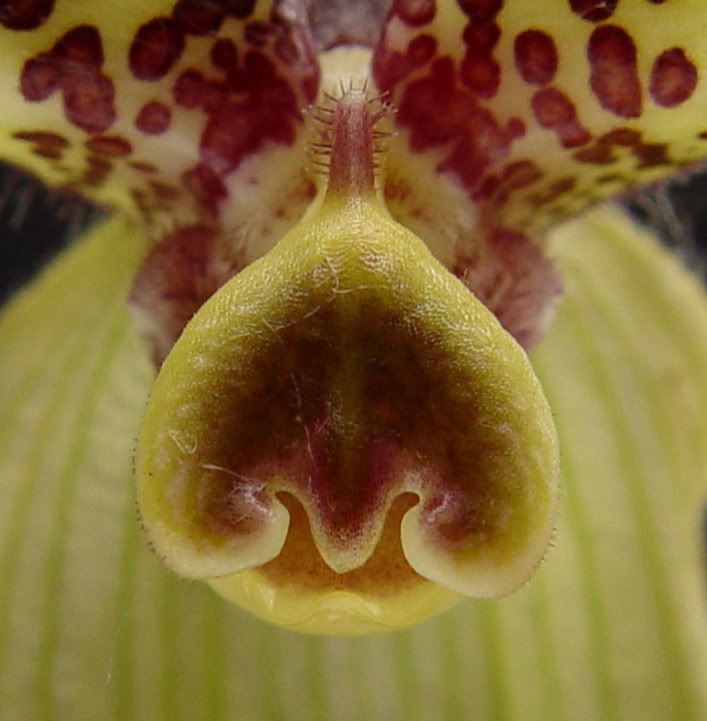
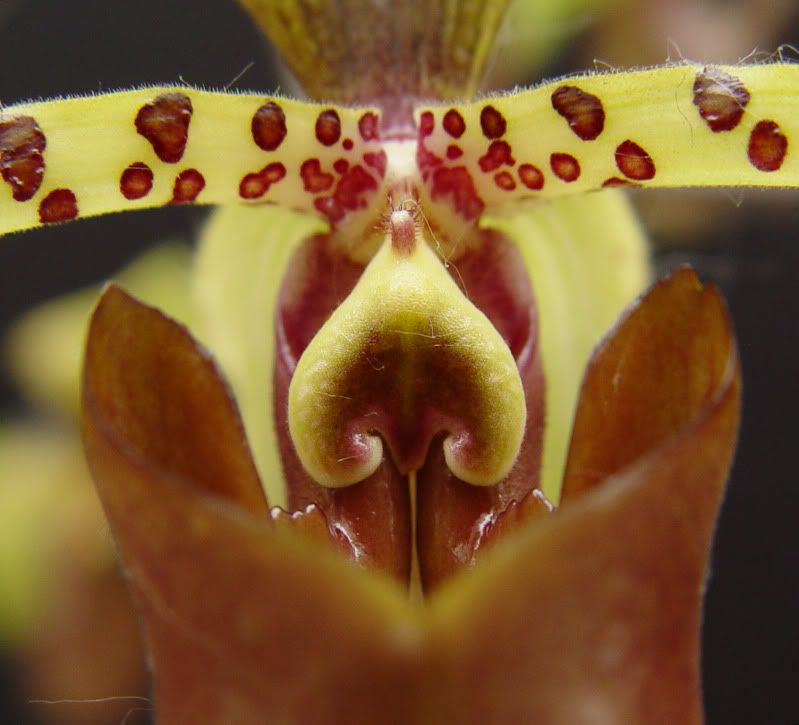
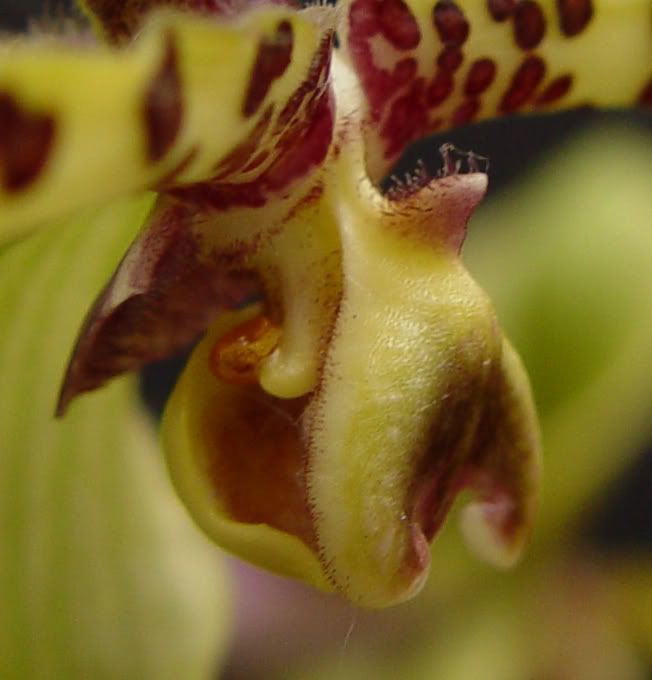
The ovary and the flower stem of the Horizontal form is much more hairy compared to the regular form
ovary and stem of Horizontal form:
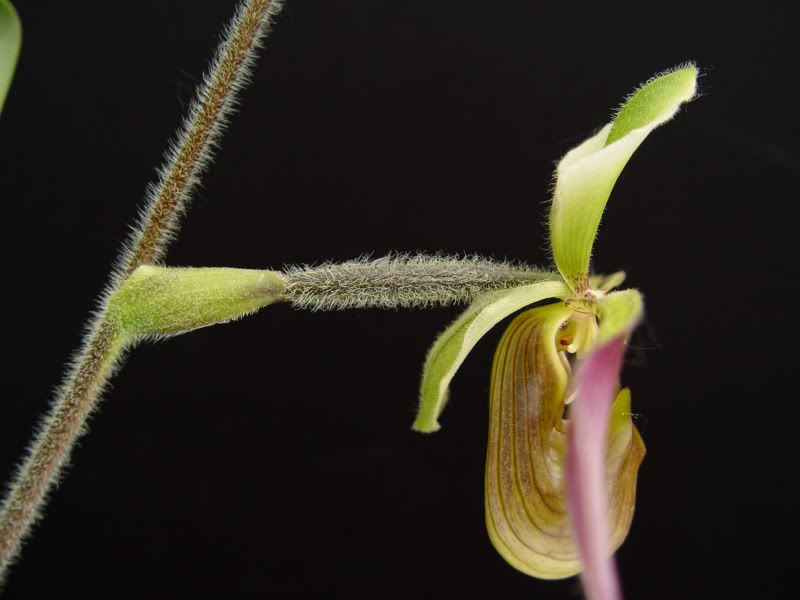
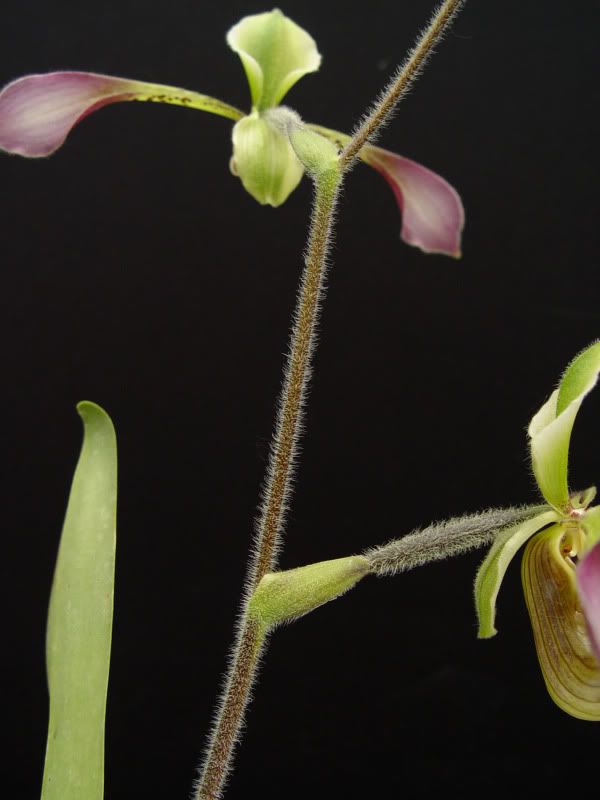
ovary and stem of regular lowii:
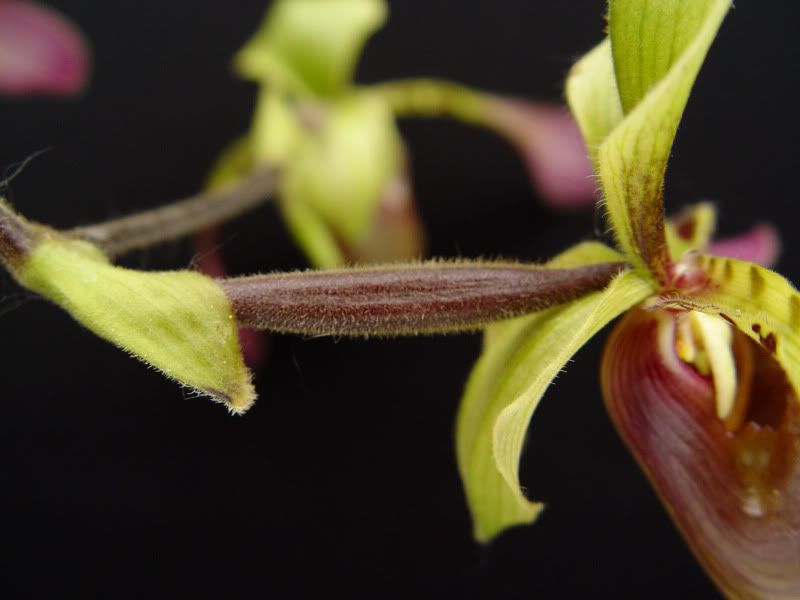
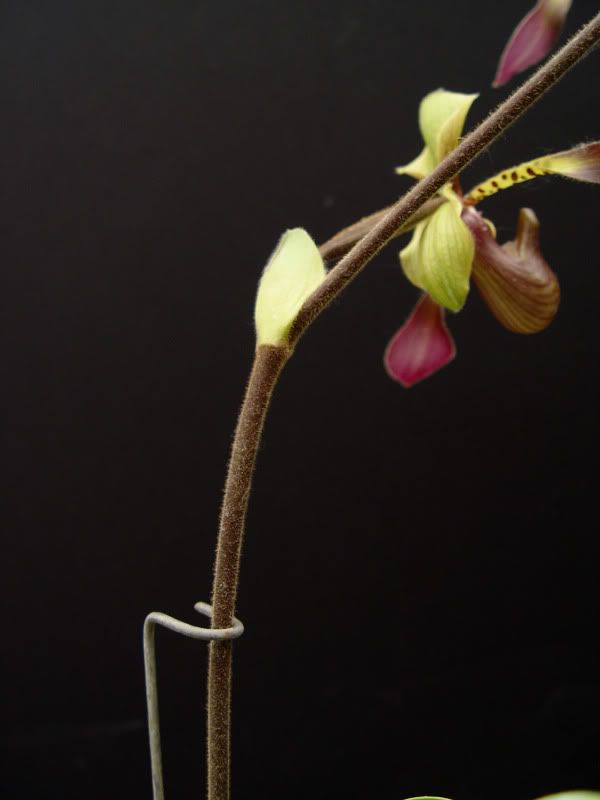
Robert

The obvious differences are:
-The "Horizontal" form has more horizontal standing petals, that don't make a 180 degree twist
- The Horizontal form has a more compact plant shape with leaves that stand up more.
- The dorsal is more green in color
Flower of Horizontal form:

Flower of regular lowii:

Looking more closely I noticed these other differences:
The staminodal shield of the regular lowii has a distinct point. On the Horizontal form it is not as distinct.
Staminode of Horizontal form:



Staminode of regular lowii:



The ovary and the flower stem of the Horizontal form is much more hairy compared to the regular form
ovary and stem of Horizontal form:


ovary and stem of regular lowii:


Robert
Last edited by a moderator:



